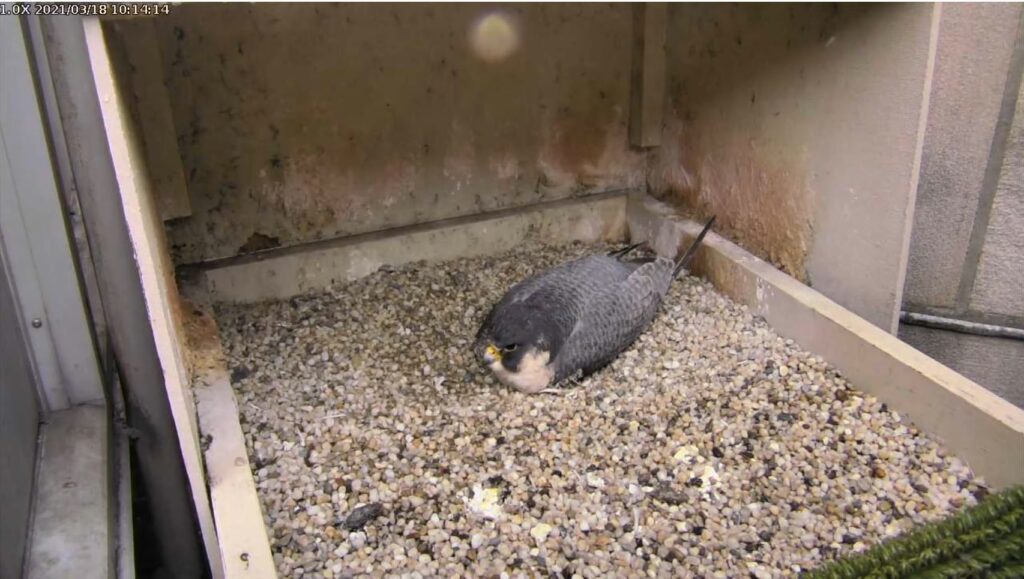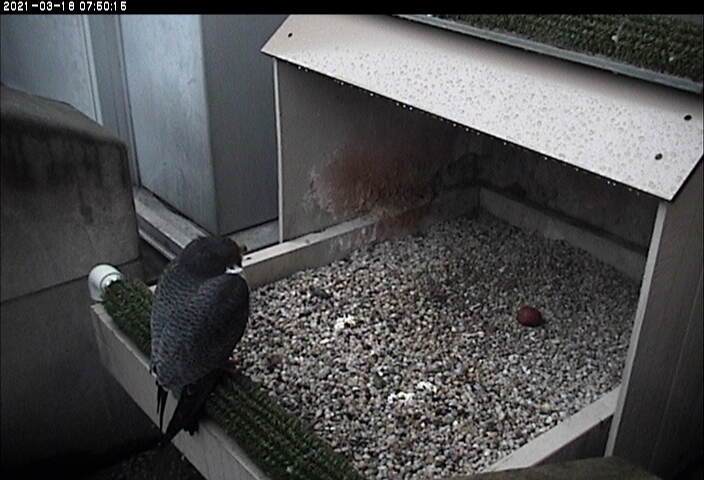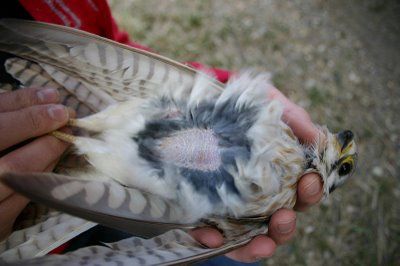
After Morela laid her first egg on St. Patrick’s Day many of you had questions about incubation. Here are some answers.
Why aren’t they sitting on the egg? Unlike bald eagles peregrines do not begin incubation until the female has laid her next-to-last egg. Only the female knows when that last egg will be. It hasn’t happened yet. Yesterday Ecco guarded instead of incubating. Click here for more details.

If incubation has not begun, why is Morela sitting on the egg? (photo at top)
Peregrines make sure their eggs stay dry and do not freeze. Yesterday was very rainy and very windy (raindrop on screenshot). Morela was keeping the egg dry.
How will we know when incubation has begun?
Incubation is the act of raising an egg’s internal temperature and keeping it there so that the embryo inside the egg develops into a baby bird (read more here). The temperature must remain elevated for the entire incubation period; otherwise the embryo dies.
Though it appears that incubation is just the act of laying one’s chest against an egg, the egg’s temperature will not rise if there are feathers between the egg and the parent’s skin. Feathers are excellent insulation so the parent has to have a bare patch of skin called a brood patch. It develops on brooding parents for the nesting season, lightly covered with feathers that the bird moves out of the way when brooding. Here’s what a brood patch looks like on another falcon, the American kestrel.

It is hard to tell if a bird is incubating by looking at a snapshot because you cannot see whether the bird exposed its brood patch. The best way to tell is by looking at the amount of time spent on the eggs. During incubation the adults spend about 98% of the day+night on eggs. This Day-in-a-Minute shows that Morela and Ecco are not spending much time on the egg.
Based on this evidence, incubation has not begun yet at the Cathedral of Learning nest.
Watch for more eggs to come at the National Aviary falconcam at University of Pittsburgh.
p.s. What’s the advantage of delaying incubation? All the chicks hatch at once! Ducks, geese and shorebirds delay incubation, too.
(photos and video from the National Aviary falconcam at Univ of Pittsburgh)
Keeping fingers crossed for a wonderful season! The post was so interesting about the skin to egg need for incubation. Thank you!